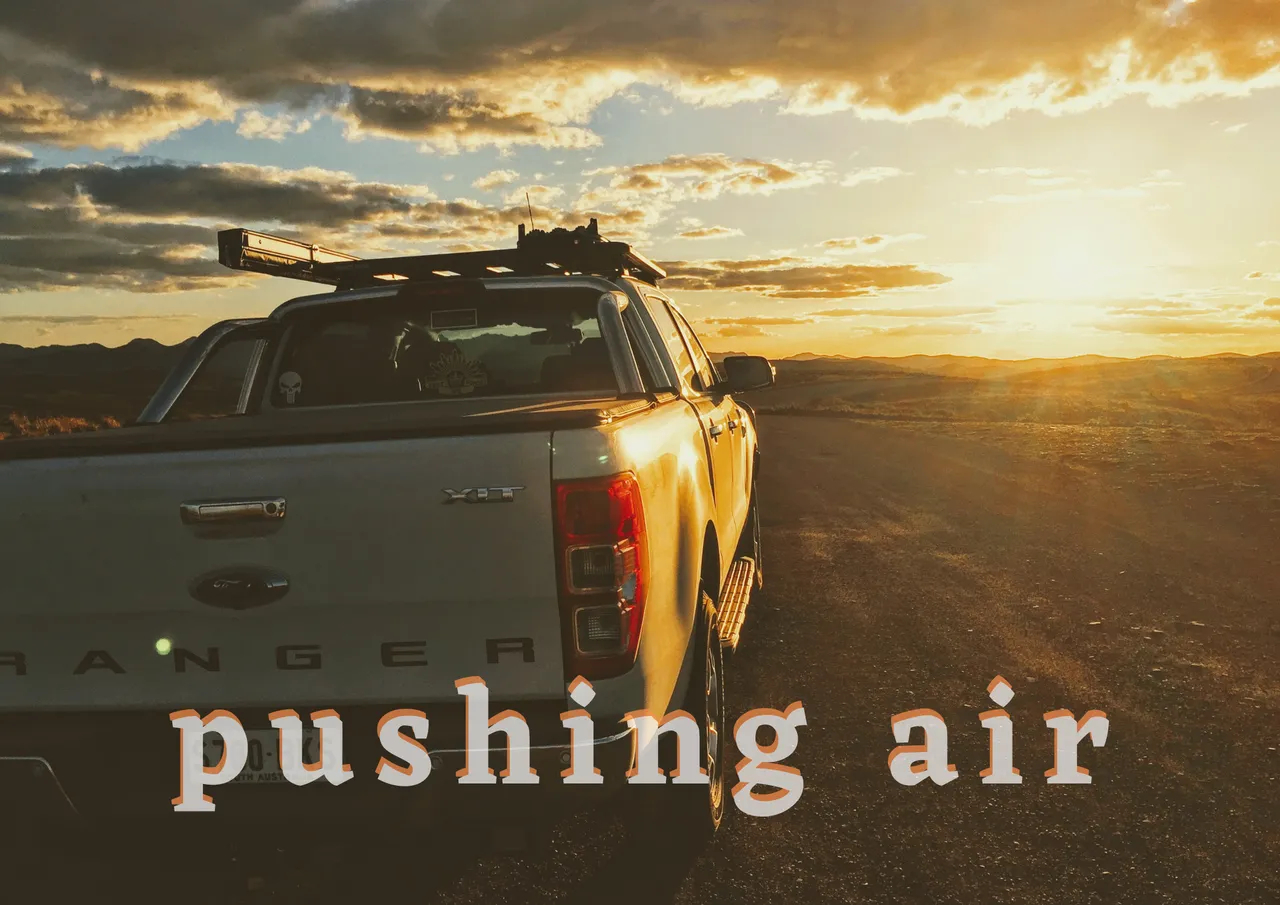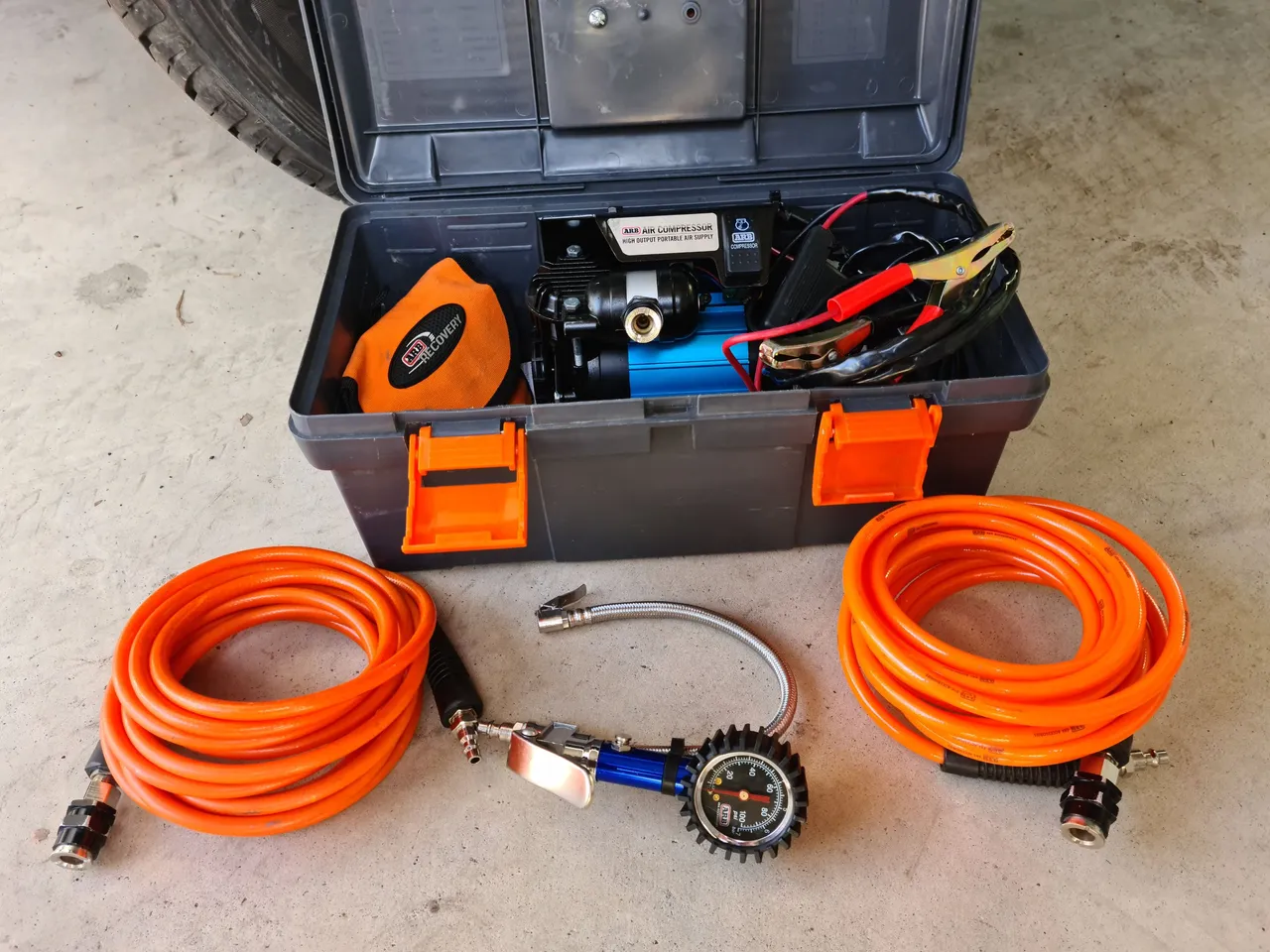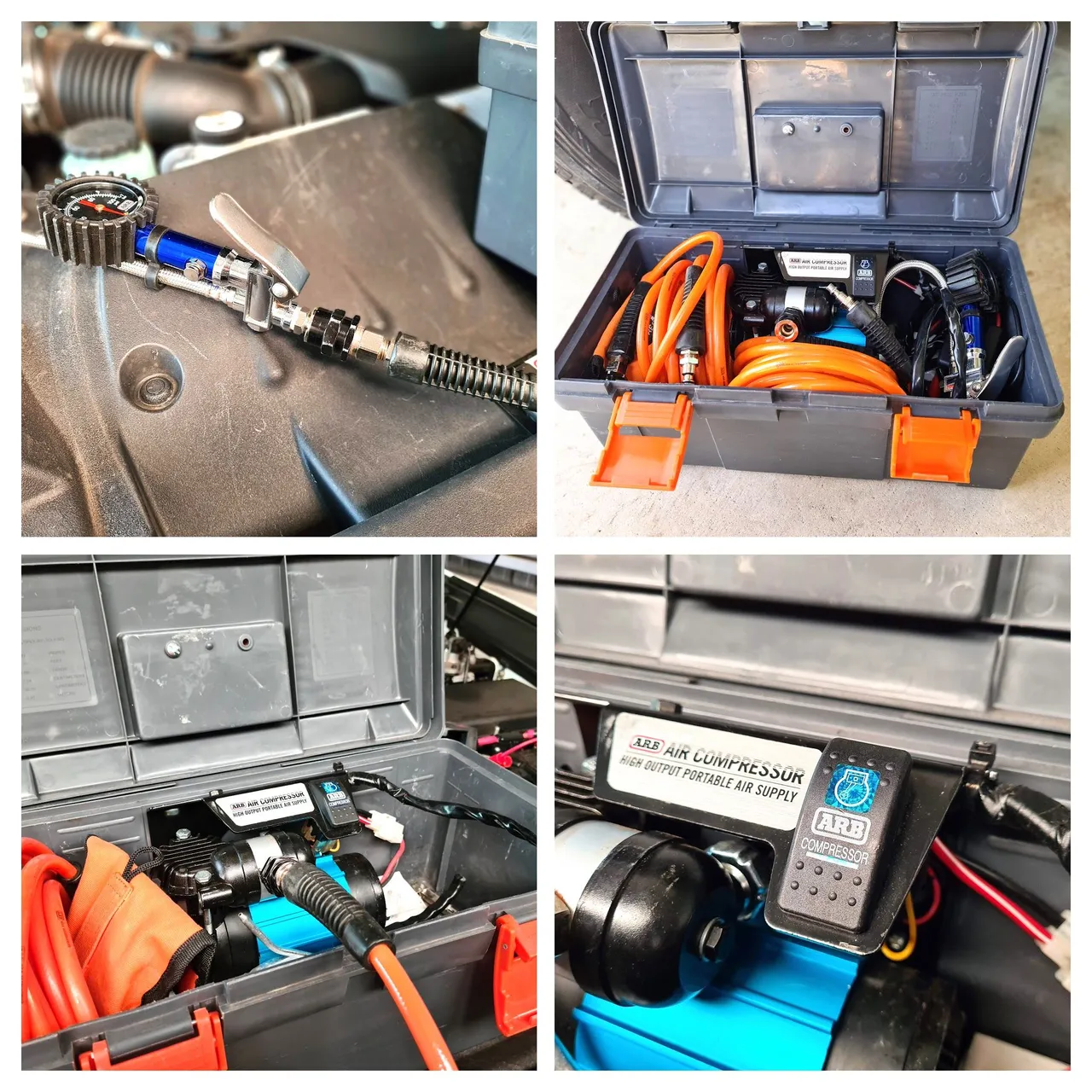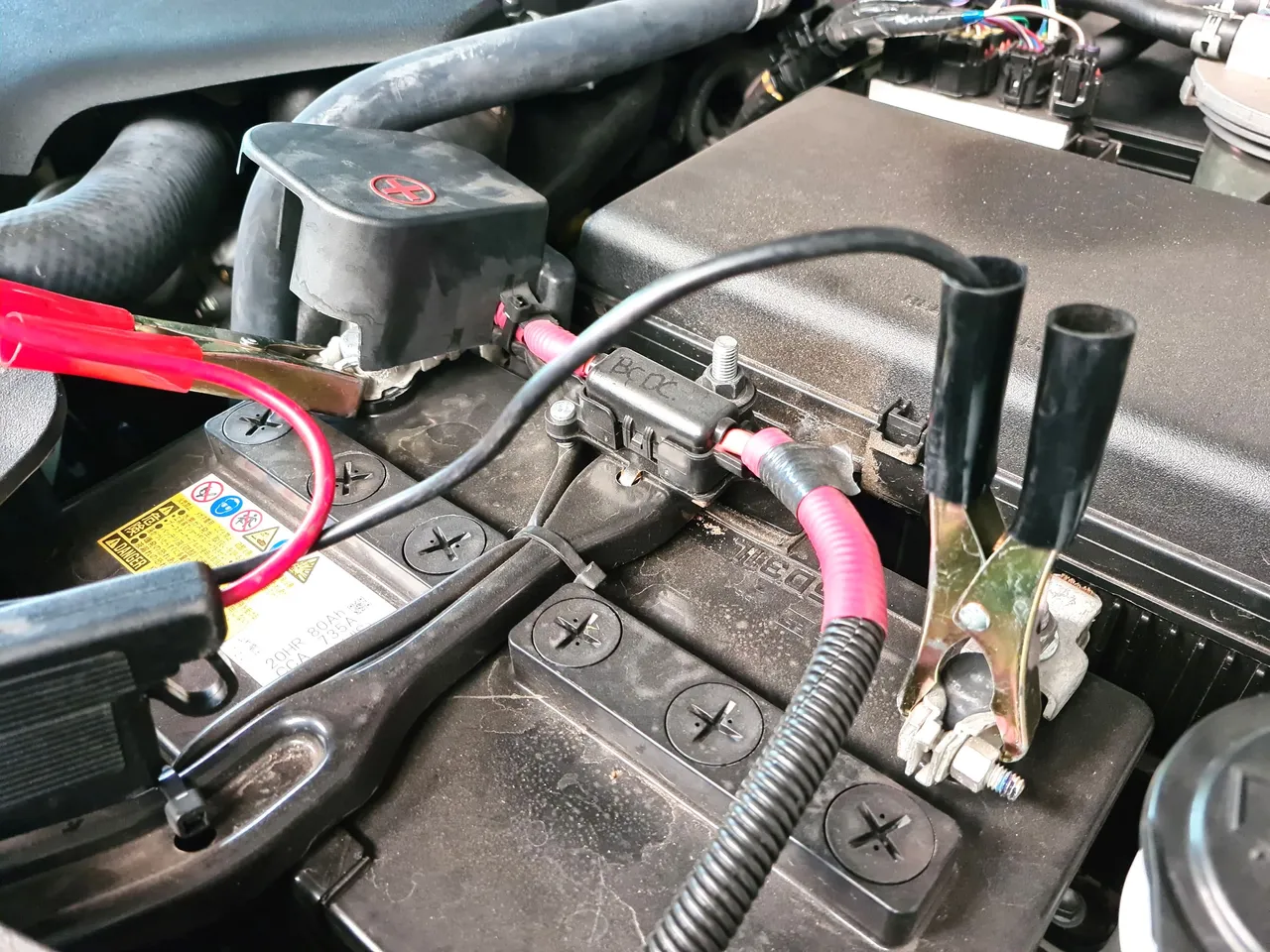Sometimes it's easy to forget what holds a car up; We get caught up in the technology on the modern automobile, the stylish looks, speed or power, the comfort...But none of that would matter if it wasn't for one simple thing, a thing we all actually need as well; Air.
Without air in the tyres a car simply doesn't work properly. Sure, there are vehicles that have solid wheels, like a forklift for instance, but generally automobiles use pneumatic tyres - Tyres filled with air [or nitrogen] under pressure. Take away the air and the vehicle is useless for driving generally.

Some weeks ago I shredded a tyre, tore the sidewall completely away from the rest of the tyre due to the heat build-up that occurred, because of the tyre having lost most of its air. It's a potentially dangerous scenario and quite costly also.
Of course there's times when one removes the air from a tyre on purpose - A four wheel driver will air-down before tackling off road tracks which helps provide better traction through a larger tread-footprint and helps prevent staking [punctures] as a semi-deflated tyre is more pliable than a fully-aired tyre plus it provides additional suspension benefits for a better ride on the rough stuff. It means less impact on the environment also as the larger footprint prevent tracks getting cut up.

The tyre on my off-road camper trailer that decided it would shred itself. You can see the spare about to go on also.
What goes down must come up
Generally I run 40psi on the road in my Landcruiser tyres but when I hit the loose gravel and tracks I air-down to 28psi straight away. Of course, not if I'm only going a short way on the dirt. But what goes down must come up as running on deflated tyres on the bitumen will destroy the tyres quickly and possibly lead to issues like I had above. So one must have a means to air-up prior to driving on sealed roads.
There's a multitude of products to do the job, compressors, designed to air-up vehicle tyres but they're not all the same and will not all do the job efficiently, or at all, so care must be taken when choosing what's right for the job at hand. This is what I use.

ARB portable high output air compressor
As you can see above, the unit is contained in its own carry box which I stow in the car at all times. The compressor unit is mounted in the box along with a few other items including the inflation gauge, my tyre deflator [used for quick deflation], hoses and the battery-connection cables.
I added an additional hose so I have 12 metres all up; I often tow my camper trailer and need the air to reach back to its wheels. The deflator doesn't come with the unit either, I just store it in the box so I don't lose it or have to hunt for it when I need to air-up.
I really love having this unit as it allows me to check the tyre pressures on my vehicles easily without having to leave home. Tyres should be checked weekly, for pressure [and damage], and when the vehicle has been at rest for at least three hours or false readings may be obtained - Heat changes tyre pressure of course right?
More importantly is the ability to air-up no matter where I am, including in the outback after off-roading or after beach driving for which I air-down to about 18-20psi. With the cost of four wheel drive tyres it makes sense not to damage them by driving deflated on hard surfaces and it's simply dangerous anyway.

How does it work
One simply pops the bonnet [hood] and connects positive to positive and negative to negative on the battery terminals of the cranking battery. This powers it up and when the car is the started the compressor can be used. The vehicle is started so that the compressor doesn't drain the battery - Cranking batteries are not designed for long-drainage but a quick burst of power after which they need recharging, while the car runs.
Plug in the air hose to the compressor outlet and the inflation gauge to the other end and one is ready to start pumping up the tyres. By this point I've usually gone around and removed all the valve caps from the tyres so it's a simple matter of going from tyre to tyre and inflating to the desired pressure, replacing the cap as each is done. The last image below shows the inflation gauge in action and below the battery connection by clamps.

The compressor will inflate from completely flat but usually I only need to go from around 18psi as a minimum as I rarely air-down below that. It will inflate to 40psi from 20psi in 30-45 seconds or so per tyre and I rarely rest it. If I was doing two vehicles I'd let it cool down a little in between each vehicle though. There's no storage tank on my unit, it just runs constantly, but that's not so much of an issue as I'm usually only doing six tyres as a maximum, my vehicle and camper trailer.

Multi-purpose
I have fittings that allow the unit to be used as an air-blower also - This comes in handy when blowing dust or sand out of things out in the field and I use it at home for the same thing, sometimes on my guns and equipment.
The compressor unit can be mounted in the vehicle but I choose not to as I move it from vehicle to vehicle. In the advent of the vehicle having air-diff-lockers it's required as the compressor is used to lock up and un lock the differentials. It generally goes in the engine bay but can be fitted just about anywhere including underneath as they are water resistant and tough. Cheaper units simply would nod stand up to that treatment.
There's also a twin compressor version but it's quite heavy, incredibly costly and for me it's overkill. It's usually used by racing car, motorbike and go-kart teams and tradespeople as they simply mount them in their race-trailers or trucks where size and weight isn't a factor. In this case they usually buy the optional storage tank so they have on-demand air at all times as the compressor cycles whenever the tank-pressure drops.
Price
The unit I have was $377AUD plus another $37 for the additional hose and $79 for the inflator gauge. So it's not cheap really, but I'm the buy once cry once guy and prefer not to buy sub-standard equipment. The twin compressor portable unit is $877AUD and all it would do for me is be faster - I deal with a little longer inflation time to save the money.
The on board units are a bit cheaper to buy but wiring looms and locker air-activation units are required, plus labour costs so they are far more costly in the long run.
If you like you can visit the compressor section of ARB's website and check out their massive range of equipment in general by clicking this link to ARB's website.
For a fellow like me who is often out in remote areas four wheel driving having the means to air-up is critical. It's not just about having aired-down, it's also to take care of business when punctures happen, and they do. It's one thing having a plug-kit on board to repair the puncture but without air you're going nowhere.
Please let me know if you have any questions. I did this post for @bigtom13 who asked for it so ask me anything you like mate. Yeah, it took me a while but I got it done Tom.
Design and create your ideal life, don't live it by default - Tomorrow isn't promised so be humble and kind
Discord: galenkp#9209
